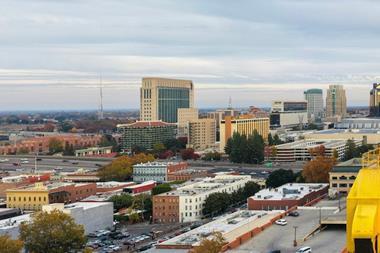There is no shortage of pension schemes looking to invest in infrastructure, so where are the funds to meet the demand? Shayla Walmsley investigates
If ever there were a time for pension funds to shift from indirect to direct infrastructure investment, around now is probably it. In reality, few schemes are likely to. Most are not large enough. Selecting assets demands people and expertise most pension funds do not have.
Selecting fund managers, in contrast, is what pension funds habitually do, whatever the asset class. Those schemes large enough have already switched - or, more likely, combined a direct investment strategy with co-investment in infrastructure funds.
For the rest, infrastructure funds are the primary means of exposure. Yet instead of large pension fund outriders followed by smaller ones, here you have European schemes of all sizes bringing up the rear with variable appetites for risk.
Even some of Europe's larger pension schemes have yet to invest. Adrian O'Donovan, head of private equity at the Irish National Pension Reserve Fund (NPRF), points out that the scheme has yet to make its first infrastructure investment despite a 2% allocation within the private equity programme and a commitment earlier this year to invest €200m in domestic infrastructure. Given its failure to secure assets to date, it could well opt for a fund.
One might expect to see a trend away from global infrastructure funds - more suited to investors seeking their first exposure - towards more regional or sector-focused funds. The smaller the scheme, the more likely it is to invest cautiously - in a global fund invested in pure infrastructure assets. But the tendency is not always correlated with size. The £3.6bn (€4.5bn) Lancashire local authority pension fund, for example, has not ruled out region-specific investments via less cautious fund structures.
"We're talking about it - giving it some consideration - though it'll be at least six months before we make any decision at all," says Mark Bennett, principal accountant at the scheme. "At the moment it's still in the discussion stage. We won't necessarily opt for a fund of funds - all options are open."
Economic volatility has increased infrastructure's appeal as a non-traditional asset class with an inflation-hedging bias. In a recent research note, Morgan Stanley's Huw van Steenis forecast that allocations to alternatives, including infrastructure, would grow over time as investors seek to diversify risk and access attractive non-correlated, risk-adjusted returns. In the first half of 2008, his analysis shows, infrastructure provided a sectoral exception to otherwise haemorrhaging equity funds.
So what might appear on the pension scheme wish list for an infrastructure fund? Despite anecdotal evidence around a preferential shift towards global or emerging market infrastructure, there are good reasons to adhere to OECD markets.
"When you go into infrastructure, the government is always an important partner. Some days you're going to have problems with the government. I want to be in a market where the courts will protect me. I don't have that confidence in China," says the chief investment officer of one relatively small public-sector European pension scheme.
Intuitively, one might expect the current economic volatility to encourage a tendency towards pure (safer) infrastructure in mature (ditto) markets - and that is borne out in some cases. "We're still focused on OECD markets - roughly a third in North America, a third in Europe, and a third in the rest, but we're concerned to manage not just geographical exposure but also exposure to different sectors," says Henrik Gade Jepsen, CIO, beta, at ATP, the €40.21bn Danish pension scheme. "We might increase our exposure - but opportunistically, asset by asset. We don't want exposure to just one type of asset."
The cautious tendency is not inevitable, according to Danny Latham, First State Investment's head of infrastructure investment for Europe. Where pension funds invest depends on the starting point for diversification. "What they want is low volatility and high cash yields, but how they do it depends on where they're allocating away from - whether it's equities, for example, or emerging markets," he says.
"Those with a lower risk appetite tend to look at operating assets in traditional economies; they'll favour OECD markets over emerging markets. With experience, they take a bit more risk in sectors - greenfield or development assets, or emerging markets."
The OECD estimates global infrastructure requirements to total $41trn over the next 25 years, with a forecast 10-15% of the cost being met by the private sector. The infrastructure demand from emerging markets might be there, but is the demand for emerging market infrastructure as clear?
In July, BNY Mellon subsidiary Newton Investment Management identified construction and reconstruction - infrastructure - as an investment ‘mega-trend'. Specifically, the fund manager predicted that emerging economy infrastructure would continue to be "a solid growth area" against a cyclical downturn.
There are certainly emerging market funds out there. Andrea Nannini, manager of the recently launched HSBC GIF Mena fund, a SICAV, says the fund will invest in publicly traded, infrastructure-related stocks. Nannini describes regional, ambitious infrastructure development programmes as providing "an exciting investment theme".
What has changed in recent months is less of a focus on the funds pension schemes want to invest in - mature and pure versus emerging and risky - but rather the structure of the vehicle itself. One consequence of the apparent failure of highly leveraged models adopted by Australia's Macquarie and Babcock & Brown has been a shift in pension fund focus away from listed towards unlisted funds. The result will likely be an acceleration of a trend towards attrition that had already begun in a fund-saturated market.
"There are really two groups of funds: private equity-style funds, which fit assets with a shorter time frame, and buy-and-hold funds," says Jepsen. "Assets have been expensive, but my guess is that they'll become less so in 2008 - though perhaps that's wishful thinking on my part.
"We're buy-and-hold investors," he adds. "One thing we've learned is that it's necessary to focus on risk-adjusted returns, not just absolute returns and we're careful not to invest in too high-risk assets. Our investments are implicitly risk adjusted. We're not looking for double-digit returns created by excess leverage." The scheme has €1.25bn committed and €700m invested - totalling around 1.5% of the fund.
Another consequence of the demise of the apparently invincible - and leveraged - investor, has been that pension schemes are looking closely at managers themselves - for example, at their structure, experience, and value added. "With the increase in the number of funds and managers, there's more rigorous assessment," says Latham.
"You had a number of new entrants coming from banking and the advisory side, with not much a track record in managing assets. There has been a shake-out and many recent entrants have disappeared. It might sound glib, but there has been a change in focus away from financial engineers towards real engineers."
As pension funds look for solid management, national and local governments - often the owners of infrastructure assets - are upping their demands that potential investors demonstrate their fitness not only to own but also to manage them.
By investing in funds rather than assets, pension funds shift the fit-and-proper scrutiny to fund managers. With a 3% allocation target for infrastructure by 2010, CalPERS in August published an investment policy for the asset class that included an emphasis on "supporting essential community services".
It is possibly evidence of a shift closer to home for a scheme that invests both directly and indirectly, both in mature and emerging markets. But what is interesting here is the requirement for fund managers to sign up to the scheme's charter for fair labour practices, and the scheme's commitment to minimising the impact of its infrastructure investment on public-sector jobs. The first is an indication of clout - that, given enough scale, a pension fund can pretty much cast a fund in its own image.
The second is a product of increased scrutiny of all investors in domestic infrastructure, including pension funds. "These are sensitive assets and there's a strong focus from governments that they're owned by fit and proper people," says Latham. "It goes beyond development to management. You're seeing it already - it's about governments' desire to see long-term ownership by people who manage them for what they are.
It's buy-and-hold, rather than the traditional optimise-and-exit approach."
Where infrastructure resides in the portfolio will determine the approach to it, according to Michael Underhill, CEO of US advisers Capital Innovations, which assesses infrastructure funds for investors. The non-correlative factor is significant. Underhill claims 44% of investors classify infrastructure as a part of their overall private equity allocation, 50% as a standalone allocation, and 6% as a subset of real estate.
Not only will this determine whether funds are open- or closed-ended, it will also open up to smaller pension schemes opportunities to invest funds of funds "that may otherwise not be available to them". He adds: "Relying on experienced professionals with a strong network has huge potential to offer significant added value on investments.
"The returns are dissimilar, because there's a low correlation with other asset classes more pension funds are getting into it. It's moving away from sovereign wealth funds and public pension funds towards mid-sized and even small pension funds. All pension funds should look at the people, performance, risk and vehicle structure, then at the risk managers."
If you want to see what infrastructure funds will do, says Peter Zabierek, senior portfolio manager at Urdang, look at real estate. "You're seeing investment in both unlisted funds and funds of funds. Infrastructure as an asset class is less developed than real estate - it has a shorter track record, and the business models have yet to evolve. Pension funds without a whole lot of expert staff will hire a fund manager."
Real estate managers, he says "have a longer history of watching things go wrong. What's happened before in real estate is just beginning to happen in infrastructure. The Macquarie model involved paying out a high dividend, then borrowing to pay it. That happened in real estate decades ago."
What seems clear is that any paucity of infrastructure funds is not a case of uncharacteristic shyness on the part of fund managers reluctant to bring vehicles to ravenous pension funds. Far from it.
"I've a hunch that players in the current market are not yet clear how they'll play infrastructure - and that also goes for their consultants," says Roland Pfeuti, head of energy, infrastructure and climate at Julius Baer. "What happened is that in the past five years infrastructure has come to the forefront as a potential new asset class matching long-term liabilities. There are still interesting opportunities across various sectors but people will try to understand entry valuations, sensitivities and credit spreads better."
The appetite, in short, is for infrastructure rather than infrastructure funds, and it may be that funds will act as stopgaps in a trend towards direct investment. Even the giant CalPERS, in a response to its consultation on infrastructure investment policy, justified fund investment as providing "flexibility given limited staff resources and [allowing] CalPERS to further its expertise in the infrastructure sector".
Clark McKinley, a spokesman for CalPERS, said it was "premature" to comment on the quality of existing infrastructure funds. "Our staff are still gathering, assessing, and screening potential funds for investment that probably won't happen until early 2009," he said. "Check back next year. We typically begin such programmes with investments in funds of funds, or funds, and hold off doing direct investments until we get more experience with the programme [but] this is all speculative at this time."
In the meantime, fund managers might be advised to spend their time ratcheting up the clarity of their offerings not just in terms of the assets (and the price of those assets) in which they invest, but also of their management capacity and, albeit, cautious diversity of their assets.
"In the next few years infrastructure will become more popular. When investors take the first step, they want vanilla. Phase two is when they get into raspberry ripple," says Zabierek.












